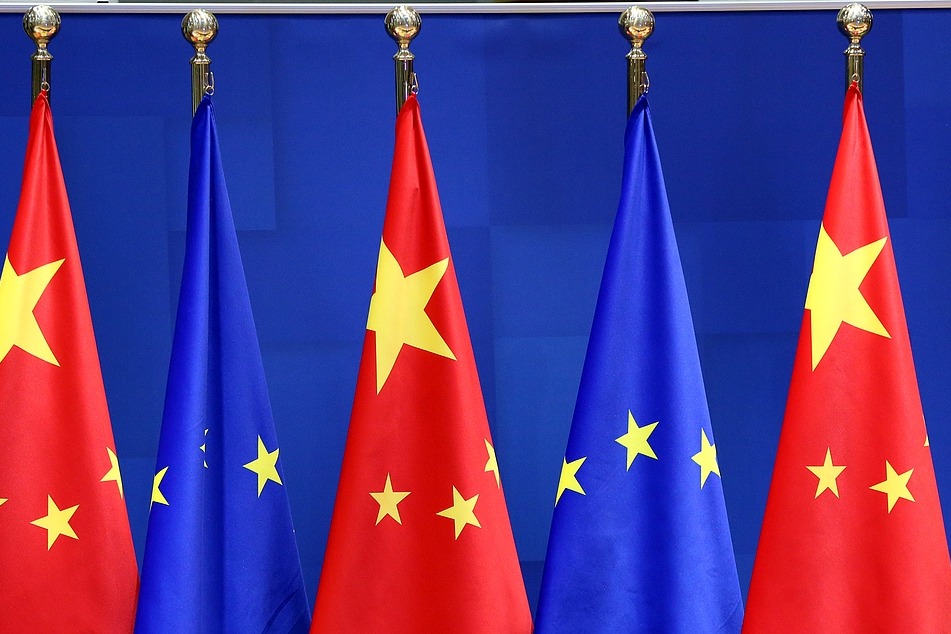Deepening cooperation in support of Blue Pacific initiative


China strives to align its engagement with the regional environmental and developmental goals of the South Pacific
In recent years, the South Pacific region has witnessed a notable shift in its geopolitical landscape, largely driven by China's expanding influence through its Belt and Road Initiative. This strategic push has seen China significantly increase its engagement with South Pacific island nations, leading to enhanced economic and diplomatic ties. However, this growing influence has also elicited responses from Western powers, most notably the United States and Australia, leading to a complex and evolving regional dynamic.
China's involvement in the South Pacific has predominantly focused on infrastructure development, financial aid, and capacity-building initiatives. Through the BRI, China has invested heavily in locally-needed projects such as roads, ports, and public buildings in countries such as Tonga, Fiji and Papua New Guinea. These investments are often accompanied by financial aid packages and loans, which, while beneficial in the short term, have raised concerns about long-term debt sustainability and dependency.
China's financial support for Fiji has been particularly noteworthy. Chinese investments have included substantial infrastructure projects, such as the construction of a new airport terminal and improvements to the road network. In addition, China has provided aid in areas such as agriculture and health. One notable example is China's assistance in developing local agricultural practices, including the introduction of advanced mushroom cultivation techniques that have boosted Fiji's agricultural productivity.
China's approach extends beyond mere economic assistance. It encompasses a broader strategy of fostering educational and cultural exchanges. Chinese-sponsored scholarships have allowed students from the South Pacific to study in China, thereby building a foundation for future diplomatic and economic ties. Additionally, medical teams have been dispatched to provide healthcare services, and technical experts have offered training in various fields. These initiatives not only contribute to immediate improvements in local conditions but also serve to build long-term relationships based on mutual benefit and understanding.
A significant aspect of China's engagement in the South Pacific is its attempted alignment with the region's environmental and developmental goals. The South Pacific countries have been vocal about the need for sustainable development, particularly in the face of climate change, which poses an existential threat to many island nations due to rising sea levels. China's emphasis on integrating sustainable practices with its development projects resonates with the South Pacific's Blue Pacific initiative, which aims to address climate change and promote environmental stewardship. This alignment presents opportunities for collaborative projects that leverage China's technological advancements and expertise in green technologies.
Moreover, China's commitment to learning and respecting local languages and cultures further illustrates its intention to build genuine partnerships. By understanding and incorporating local cultural contexts into its projects, China enhances the effectiveness of its aid and fosters goodwill among South Pacific nations. This approach contrasts with the more transactional nature of some traditional aid models, highlighting China's efforts to integrate into the regional sociocultural fabric.
Despite these positive aspects, China's growing influence in the South Pacific has been met with caution and skepticism, particularly from Western countries. The United States, for example, has expressed concern about China's strategic intentions and the potential for increased Chinese military presence in the region. In response, the US has intensified its diplomatic efforts and sought to reaffirm its own commitment to the South Pacific through various initiatives aimed at counterbalancing China's influence.
Australia, a traditional regional power, has also reacted to China's expanding footprint. Historically, Australia has maintained strong ties with South Pacific island nations, but recent years have seen a deterioration in its relations with China, largely due to geopolitical tensions and Australia's alignment with US-led initiatives such as AUKUS. This has led to increased scrutiny of China's activities in the South Pacific and a more assertive Australian stance in regional affairs.
In contrast, New Zealand has adopted a more balanced approach. As the first Western country to sign a memorandum of understanding with China on the BRI, New Zealand has engaged in cooperative projects that align with its own developmental priorities. New Zealand's strategy involves navigating its relationships with both China and traditional allies, ensuring that its foreign policy remains pragmatic and adaptable to shifting global dynamics. This approach underscores New Zealand's role as a model for managing complex geopolitical relationships while maintaining a focus on mutual benefits and regional stability.
Public perceptions of China's involvement in the South Pacific vary. In many South Pacific nations, there is an increasing recognition of the tangible benefits brought about by Chinese aid and investment. However, there is also growing awareness of the potential risks associated with debt dependency and the need for careful management of international partnerships. The challenge for these countries is to balance the immediate benefits of Chinese assistance with the long-term implications for their economic needs.
In summary, China's expanding influence in the South Pacific represents a significant shift in the region's geopolitical landscape. While China's investments and aid have brought notable benefits to South Pacific island nations, they have also triggered a complex interplay of responses from other global powers. The evolving dynamics highlight the importance of strategic diplomacy and balanced engagement in navigating new situations presented by China's growing role in the region. As the situation continues to develop, the South Pacific's approach to managing these relationships will be crucial in shaping the future of regional stability and cooperation.
The author is a senior visiting fellow of the Institute for Global Cooperation and Understanding at Peking University and a research fellow at the New Zealand Asia Institute at University of Auckland. The author contributed this article to China Watch, a think tank powered by China Daily.
The views do not necessarily reflect those of China Daily.
Contact the editor at editor@chinawatch.cn.


































